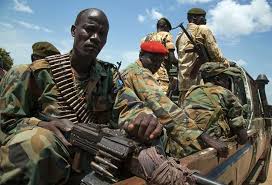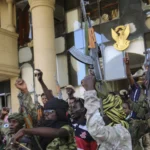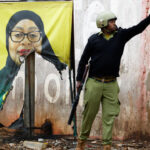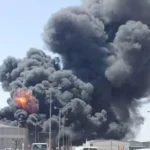Sudan’s civil war, ignited by deep-rooted political, ethnic, and economic tensions, has spiraled into a chaotic struggle marked by violence and humanitarian crises. As the conflict continues to evolve, understanding its potential trajectories requires an analysis of current dynamics, influential players, and historical contexts. With the situation becoming increasingly complex, here’s what we might anticipate for Sudan in the coming months.
The Historical Context
To appreciate the present turmoil, one must delve into Sudan’s tumultuous past. The country has experienced decades of civil conflict, exacerbated by colonial legacies, economic marginalization, and ethnic divisions. Following the ousting of President Omar al-Bashir in 2019, hopes for a transition to democracy were dashed as tensions resurfaced between military factions and civilian governance. The power struggle regained momentum with the violent clashes that erupted in April 2023 between the Sudanese Armed Forces (SAF) led by General Abdel Fattah al-Burhan and the paramilitary Rapid Support Forces (RSF) under Mohamed Hamdan Dagalo, commonly known as Hemedti. This internal conflict has not only resulted in significant casualties but has also plunged the nation into a severe humanitarian disaster.
Humanitarian Catastrophe
As the violence persists, the humanitarian implications grow dire. Reports indicate that millions of Sudanese civilians have been displaced, with over 3 million people forced to flee their homes since the conflict reignited. Access to basic services—such as food, water, and healthcare—has been critically compromised, triggering widespread malnutrition and disease outbreaks. Humanitarian organizations have consistently reported challenges in delivering aid due to ongoing hostilities, highlighting a potential famine affecting large swathes of the population.
Moreover, the Central African Republic, South Sudan, and Egypt’s borders are becoming increasingly strained as refugees flow into neighboring countries, exacerbating regional instability. A protracted conflict could lead to a refugee crisis on a scale reminiscent of the Syrian conflict, prompting international humanitarian agencies to seek urgent interventions.
Military Dynamics and Power Struggles
The dynamics of the military conflict have not only persisted but intensified, with both the SAF and RSF continually seeking to consolidate power. Analysts predict an escalation in violence as military leaders vie for control of strategic territories, resources, and political influence. The SAF’s strategy has involved airstrikes and ground offensives targeting civilian areas, while the RSF has relied on guerrilla tactics and utilizing urban warfare, complicating military responses.
In the face of this ongoing violence, cautious political maneuvering can be anticipated from both sides. The SAF may attempt to garner international support and legitimacy, especially from countries keen on countering Iran’s influence in the region. Conversely, the RSF, which has historically had ties with various militiamen in regions like Darfur, may seek to expand its influence through alliances with tribal leaders who are disenchanted with the central government’s authority.
International Involvement
The international community’s role in Sudan is complex and fraught with challenges. With nations like Egypt, Saudi Arabia, and the United Arab Emirates having vested interests in regional stability, interventions could shift the course of the conflict. Diplomatic efforts by the African Union or United Nations may result in ceasefire agreements, but these have historically been ephemeral and often violated.
Looking ahead, Sudan’s international relations will likely influence the civil war’s trajectory. Countries with vested interests may intervene militarily or financially to aid factions, thereby prolonging the conflict. Conversely, coordinated international sanctions against war criminals or individuals implicated in human rights abuses could potentially alter the behavior of conflicting parties if properly implemented and enforced.
Future Prospects
As the civil war in Sudan continues to unfold, various scenarios loom on the horizon:
- Escalation and Fragmentation: Continued clashes could lead to a fragmented Sudan, where rival factions carve out distinct territories, leading to localized governance structures resembling warlordism.
- Short-Lived Ceasefire: Potential ceasefire negotiations might yield temporary reductions in violence but may not lead to a sustainable resolution, as underlying issues remain unaddressed.
- International Intervention: An external party may catalyze negotiation processes, potentially leading to a peace treaty that establishes a framework for political transition.
- Escalating Humanitarian Crisis: Without immediate cessation of hostilities and international humanitarian assistance, the plight of civilians will worsen, drawing more attention and possibly prompting action.
In the absence of decisive action, the prospects for a peaceful resolution remain bleak. As the Sudanese grapple with the chaos of civil war, their lives hang in the balance—highlighting the urgent need for humanitarian response, political solutions, and international engagement to stave off further catastrophe. The world watches, but the future of Sudan will ultimately be determined by its people and the choices made by those in power on both sides of the conflict.
Email Us on editorial@nnafrica.com













